
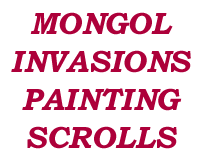

|



|

EMAKI, PAINTING SCROLLS OF JAPAN
The Tale of Genji Scrolls (4 scrolls remaining), the Mount Shigi Temple Scrolls (3 scrolls), the Chief State Councillor Ban Scrolls (3 scrolls),
and the Birds, Beasts and Humans Caricature Scrolls (4 scrolls) are regarded as the four great
painting scroll sets of Japan. All of them, now national treasures, are products of the 12th century.
Literature, Buddhist tales, Shinto stories, folk legends and military exploits are themes of
emaki. Some of the emaki have humorous elements which perhaps are one of the sources of modern
Japanese comics.
A set of emaki can comprise one scroll, or as many as 48 scrolls. Scrolls vary in height from 22 to
52 cm, and the longest scroll runs up to 25 metres.
Although emaki is usually meant for viewing by one person, it can also be a means of group
entertainment. A group of people may gather in front of an emaki, viewing it while
listening to someone who recites the story. Emaki are hand-scrolls with text and illustrative paintings that together usually narrate a story. Although
the origin of emaki can be traced back to Chinese hand-scrolls that came to Japan around the 6th century,
emaki evolved into a unique Japanese art form beginning in the 9th century. It reached its golden
age between the 12th and 14th centuries. With the coming of water-and-ink paintings from China after
the 14th century, however, emaki declined in importance.
Emaki are hand-scrolls with text and illustrative paintings that together usually narrate a story. Although
the origin of emaki can be traced back to Chinese hand-scrolls that came to Japan around the 6th century,
emaki evolved into a unique Japanese art form beginning in the 9th century. It reached its golden
age between the 12th and 14th centuries. With the coming of water-and-ink paintings from China after
the 14th century, however, emaki declined in importance.
Shown on the right is the mounted Takezaki Suenaga in front of the
stone barrier "Genko borui"
, originally called "ishitsuiji" ( This scroll set is unique in that it was made according to instructions from a participant -- Suenaga himself -- in
the battles. It is therefore of special value as a pictorial source material for Japanese
and Chinese history.
Okudaira, Hideo. Emaki: Japanese Picture Scrolls (Rutland, Vt.: Charles E. Tuttle, 1962)
Okudaira, Hideo. Emaki: Picture-scrolls. translated by Fred Dunbar. 10th ed. (Osaka: Hoikusha Publishing Co., 1987)
Komatsu, Shigemi, ed. Nihon emaki taisei (Tokyo: Chuo Koronsha, 1977-1979)
Moko shurai ekotoba (Nihon emaki taisei, vol. 14) (Tokyo: Chuo Koronsha, 1978)
Genko Shiryokan = Genko Historical Museum (Fukuoka-shi: Genko Historical Museum, 1994).
A catalogue of displays
in the Museum.
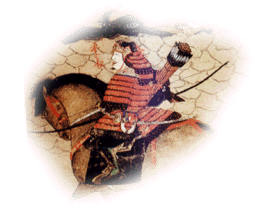 TAKEZAKI Suenaga (
TAKEZAKI Suenaga ( ) was a low-ranking samurai in Kyushu during
the Mongol invasions of the late 13th century. His courage and initiative in the defence against the invaders
was rewarded with a feudal fief in today's Kumamoto prefecture. To show his gratitude for the blessings
of the Shinto deities, he commissioned a set of two painting scrolls by local artists. He dedicated
this Moko shurai ekotoba (Mongol Invasions Painting Scrolls) to the Kosa Daimyojin Shinto Shrine
near his native place in Kyushu. Today this two-scroll set is kept in the Museum of Imperial
Collections (Sannomaru Shozokan) in Tokyo.
) was a low-ranking samurai in Kyushu during
the Mongol invasions of the late 13th century. His courage and initiative in the defence against the invaders
was rewarded with a feudal fief in today's Kumamoto prefecture. To show his gratitude for the blessings
of the Shinto deities, he commissioned a set of two painting scrolls by local artists. He dedicated
this Moko shurai ekotoba (Mongol Invasions Painting Scrolls) to the Kosa Daimyojin Shinto Shrine
near his native place in Kyushu. Today this two-scroll set is kept in the Museum of Imperial
Collections (Sannomaru Shozokan) in Tokyo.
 ).
).
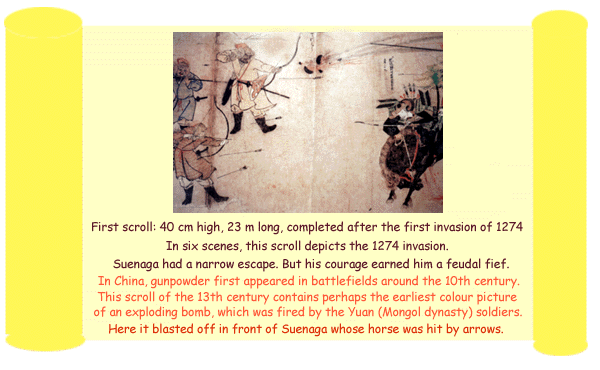
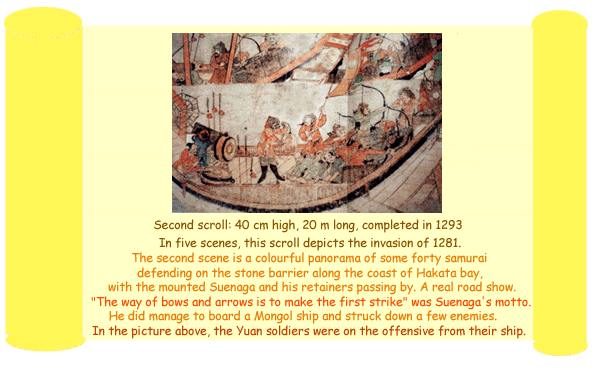
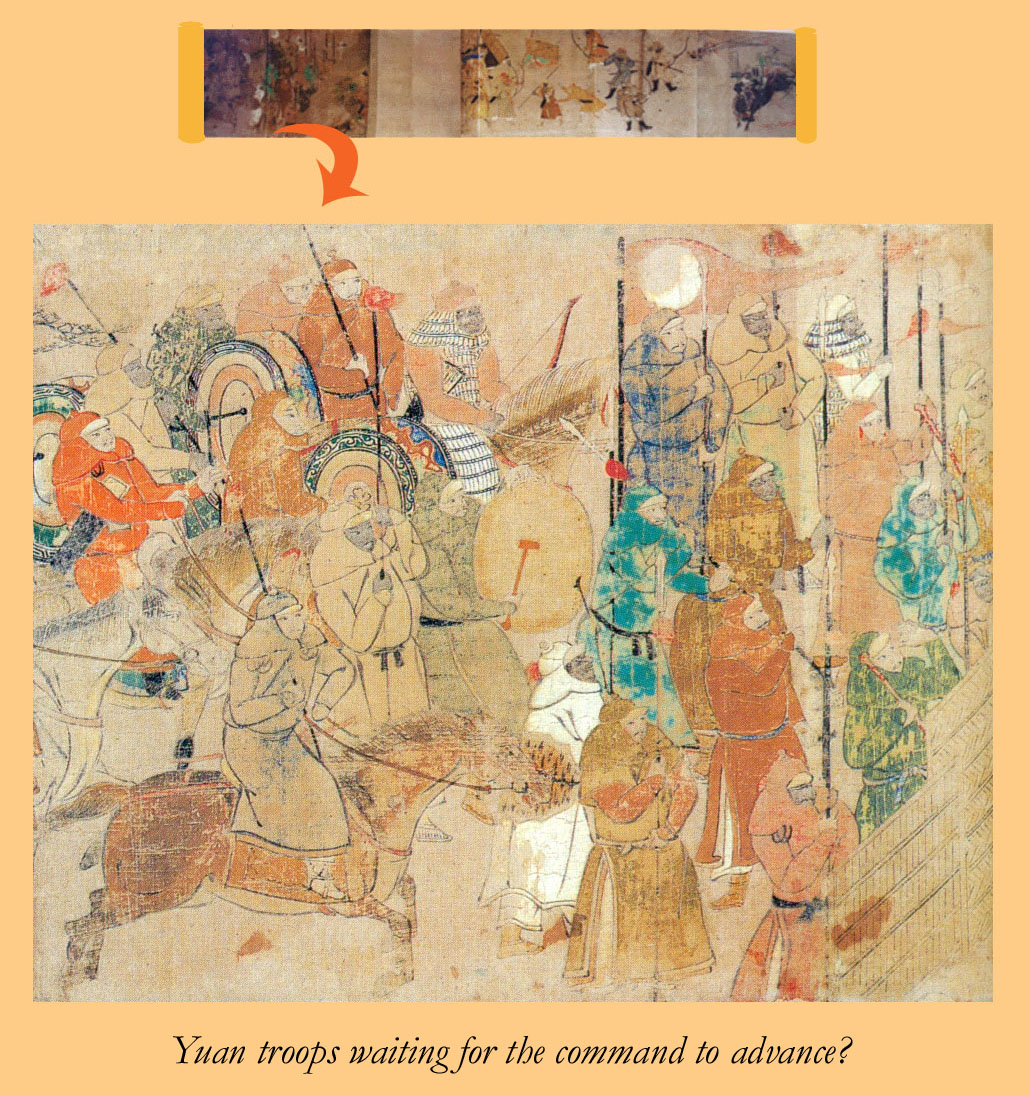
It is worth noting that in the entire scroll set, not a word or a scene refers to or depicts anything
about typhoons or storms. The kamikaze ("divine winds") does not exist in Suenaga's illustrated
account of the defence of his motherland,
although kamikaze is commonly regarded as one of the main causes of the
Yuan armies' defeat.
From the Gardener, Louis Chor. Canada, May 2000. Revised September 2015.